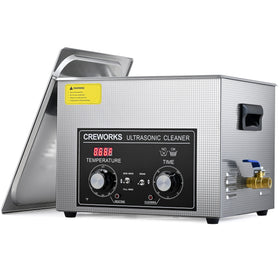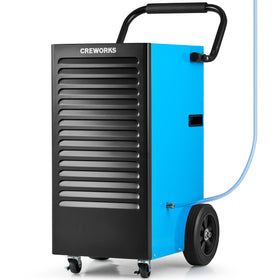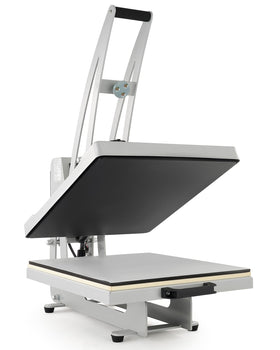With over 10000+ orders
With over 10000+ orders

Copper naturally develops a patina (that greenish layer) over time due to oxidation when exposed to air, moisture, and skin oils.
While some people appreciate this aged look, you may want to restore copper's natural warm, rosy glow. Here's how to clean copper jewelry safely:
For regular maintenance, you can use a simple solution of mild dish soap and warm water.
Gently wash the piece using a soft cloth or your fingers, being careful not to scrub too hard as copper is relatively soft and can scratch.
Rinse thoroughly with clean water and dry completely with a soft, lint-free cloth.
This helps prevent water spots and additional oxidation.
For tougher tarnish, you can create an effective natural cleaning solution using lemon juice and salt.
The citric acid in lemon juice works with salt's mild abrasive properties to remove tarnish while being gentler than commercial cleaners.
Mix equal parts lemon juice and salt into a paste, apply it gently with a soft cloth, then rinse thoroughly and dry completely.

While ultrasonic cleaners are excellent for many types of jewelry, they require careful consideration for copper pieces. Here's why:
First, copper is relatively soft compared to metals like gold or platinum. The vigorous vibrations in an ultrasonic cleaner could potentially damage delicate copper pieces or loose components.
Second, if your copper jewelry has any stones or decorative elements, the ultrasonic action might loosen these settings since copper is more prone to expanding and contracting than other metals.
However, if you do choose to use an ultrasonic cleaner, use it only briefly (no more than a minute or two) and ensure the piece is structurally sound beforehand.
The cleaning solution should be specifically formulated for copper or a mild jewelry cleaner - never use harsh chemicals that could react with the copper.

Before placing any copper piece in an ultrasonic cleaner, carefully examine it for:
Loose stones or decorative elements
Existing weak points or damage in the metal
Previous repairs or soldered areas
Signs of severe corrosion or structural weakness
Delicate or intricate designs that might be compromised
1. Equipment Selection
Choose an ultrasonic cleaner with adjustable power settings, ideally one designed for jewelry cleaning. Professional models that offer temperature control provide the best results.
2. Solution Preparation
Use only solutions specifically formulated for copper jewelry or a mild jewelry cleaner diluted according to manufacturer specifications. The solution temperature should be lukewarm, never hot, as heat can accelerate unwanted chemical reactions with copper.
3. Cleaning Process
Start with the lowest power setting available
Place jewelry in a dedicated basket or holder, never directly on the tank bottom
Limit initial cleaning cycles to 30-60 seconds
Monitor the piece continuously during cleaning
Stop immediately if you notice any unusual sounds or movement
4. Post-Cleaning Care
Rinse thoroughly with clean, room-temperature water
Dry completely with a soft, lint-free cloth
Examine the piece carefully for any signs of damage
Allow the piece to rest for 24 hours before wearing
For optimal results and safety, we recommend: Creworks Ultrasonic Cleaner 6L Dual Mode
For copper jewelry specifically, we recommend the CREWORKS Professional 180W Digital Ultrasonic Cleaner, which offers several features essential for safe copper cleaning:
The unit's adjustable settings make it particularly suitable for copper jewelry, as you can fine-tune both the intensity and temperature to prevent damage to your pieces.
While it's a professional-grade cleaner with a 6L capacity, you can use the included basket to safely position your copper jewelry for optimal cleaning.
Some copper jewelry should never be cleaned ultrasonically:
Antique or historical pieces
Items with known repairs or weak points
Pieces with glued elements or organic materials
Highly detailed or filigree work
Pieces with valuable patina that should be preserved
To maintain your copper jewelry's appearance longer, consider these practices:
Store pieces individually in anti-tarnish bags or boxes with anti-tarnish strips
Remove jewelry before swimming, showering, or applying personal care products
Put jewelry on last when getting dressed to minimize exposure to cosmetics and perfumes
Wipe pieces with a soft cloth after wearing to remove skin oils and moisture
Understanding when to avoid certain cleaning methods is just as important as knowing how to clean.
Never use commercial silver cleaners on copper - they're too harsh and can damage the metal.
Also avoid abrasive materials like baking soda or commercial copper cleaners unless specifically formulated for jewelry, as these can create microscratches that actually accelerate future tarnishing.
I'll help create an FAQ section optimized for Google's SERP features and a clear conclusion that ties everything together.
For regular maintenance, wipe your copper jewelry with a soft cloth after each wear to remove oils and moisture. Deep cleaning should be done when you notice tarnishing, typically every 2-3 months depending on wear frequency and storage conditions. If you're using an ultrasonic cleaner, limit this to once every three months to prevent potential wear on the metal.
While vinegar can clean copper, it's not recommended for jewelry. The acetic acid in vinegar is too harsh and can damage delicate pieces or patinas. Instead, use the gentler combination of lemon juice and salt, or a professional jewelry cleaning solution specifically formulated for copper.
Yes, most cleaning methods will remove or reduce the patina. If you appreciate the aged look of your copper jewelry, stick to gentle cleaning with mild soap and water, avoiding any acidic cleaners or abrasive materials. Some collectors actually value the natural patina and choose not to clean their copper jewelry at all.
Exercise extra caution when cleaning copper jewelry with stones or settings. The cleaning method depends on the type of stones and how they're set. Ultrasonic cleaning should be avoided for pieces with glued stones or loose settings. For such pieces, stick to gentle cleaning with mild soap and water, being careful to avoid soaking, which could loosen adhesives or damage certain stones.
Store copper jewelry in anti-tarnish bags or boxes with anti-tarnish strips in a cool, dry place. Keep pieces separated to prevent scratching, and avoid storing in bathrooms where humidity levels are high. Adding a small silica gel packet to your storage container can help absorb excess moisture.
Most commercial copper cleaners are designed for household items and are too harsh for jewelry. These cleaners can create micro-scratches that accelerate future tarnishing and may contain chemicals that could be harmful if they come in contact with your skin. Stick to jewelry-specific cleaners or gentle natural methods.

Taking proper care of your copper jewelry ensures its beauty and longevity.
Whether you choose the gentle daily method with soap and water, natural cleaning with lemon and salt, or careful ultrasonic cleaning with professional equipment like the CREWORKS ultrasonic cleaner, the key is to be consistent with maintenance while avoiding harsh chemicals and abrasive materials.
Remember that prevention is just as important as cleaning – proper storage and handling can significantly reduce the need for deep cleaning.
By following these guidelines and choosing the right cleaning method for your specific pieces, you can maintain your copper jewelry's warm, distinctive glow while preserving its integrity for years to come.











